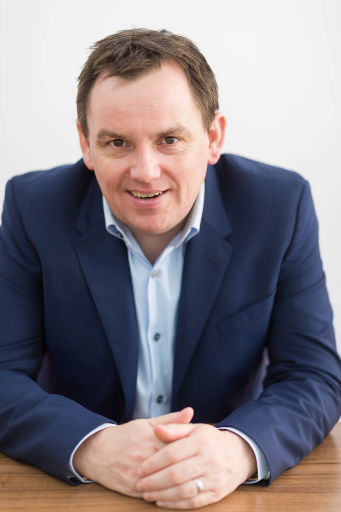Future Finance: It’s time advisers were given access to institutional quality investment solutions

In our latest Future Finance instalment, our own associate director, head of news and content, Nick Paler talks to David Ferguson, chief executive of Nucleus to get his views on everything from passive funds to the spiralling cost of investing for advisers.
There have been many criticisms levelled at the investment solutions available to advisers and their clients over the years, many of them around fees and what investors are getting in return for higher cost products run by professional investors.
Whether it’s a fund or a DFM service, fees have only one way to go from here, says David Ferguson, the CEO of cutting edge wrap platform Nucleus which he founded in 2006.
“Retail asset management is overpriced, oversupplied and tends to underdeliver for the end user,” Ferguson says.
The head of wrap platform Nucleus is not one to mince his words when it comes to the range of investments being sold to advisers and their clients.
“Not only has it not delivered for clients, and we can point to example after example of that this year alone, but it’s not even the right way to approach the investment question anymore.
“Financial advice is about plans, not products, and the asset management and DFM industries should be fitting around that if they want to help advisers. We think it could be done a lot better, and at much lower cost without simply going passive.”
Ferguson, an incomplete actuary by trade before he launched Nucleus some 14 years ago, believes change is coming in this field, especially with advice in retirement becoming far more important to clients as people live longer and traditional solutions like annuities face challenges.
“Most advisers we talk to nowadays are not having conversations about a 10 or 20-year plan to get a client to age 65. It goes far beyond that now. They are trying to build plans for clients that last 30/40 years, and that are flexible enough to meet changing goals in retirement, and unplanned life events. While plans can obviously change, it’s possible the so-called accumulation and decumulation phases could be better aligned.
“That is the future, but if you look at the product set available to advisers – particularly in the DFM market – that’s not what they are getting.”
Part of the problem facing advisers is lots of choice but little variety when it comes to the options available. They can buy a cookie-cutter risk-rated solution and consign a client to an inflexible model which tries to deliver to a single dimensional risk measure (short-term volatility) or they can opt for an expensive full-fat DFM.
Ferguson says what he finds most galling is that fees are only high to protect inflated margins, although he expects this to change as the regulator keeps the pressure on costs.
“What is hard to swallow is the fact that institutional products already offer far lower fees for the same products, be that a DFM solution or a standalone multi asset fund,” he says.
“We therefore all know that it’s possible to do these things for clients at a lower cost, but many market participants are too busy protecting their inflated margins. Even if you assumed there was more administrative burden to handling smaller portfolios for clients, for example, there’s no evidence anywhere that says it should be 3 or 4 times the cost of doing the same for an institution, which is today’s reality”
“The regulator knows this, and is pushing for more reductions to be made, and we expect lower cost active portfolios to emerge to sit alongside passives.”
One other debate still raging which he thinks no longer has relevance is the age-old argument between whether advisers should use actives or passives.
“It would be simple to say everything in a client’s portfolio should be passive, because it would bring costs right down. But the truth is, a combination can deliver more. For some asset classes, like broad equity exposure in developed markets, a passive is a great solution, but to access other asset classes sometimes it makes sense to use an active manager.”
He says a shift in mindset is needed to support advisers, using institutional-like solutions to give advisers access to portfolios which are set up to invest in the best source of alpha for the best price, be that a passive or an active solution.
“Parts of the market have moved so far beyond these debates, and they are purely focused on delivering the best possible return in the most efficient way, for the best possible price.
“That hasn’t come to the retail adviser market yet, and it’s time that changed.”
